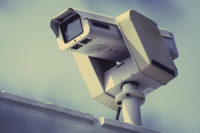A facility’s perimeter is the first line of defense against a variety of potential security threats including unauthorized entry, theft, and espionage. The purpose of a perimeter intrusion detection system (PIDS) is to effectively detect and prevent such events from occurring, providing early warning of intrusion attempts. For years, PIDS traditionally consisted of an amalgamation of conventional security solutions such as physical barriers, fences, surveillance systems, video analytics, and access control, and more complex technologies such as underground cable systems, fiber optics, and infrared systems. The problem is that these products are reactive in nature, incapable of preventing an intrusion from occurring.
Pre-Emptive Power of 3D LiDAR
3D LiDAR solutions work differently, alerting to the presence of intruders and other operational risks in real-time to help proactively prevent crimes from occurring. 3D LiDAR also eliminates the ad hoc approach to PIDS by providing a comprehensive solution, capable of reducing false alarms and operational costs while addressing a variety of physical security threats in nearly every type of weather and lighting.
How Does 3D LiDAR Work?
Short for Light Detection and Ranging, LiDAR is a time-of-flight (ToF) sensing technology that emits low-power, eye-safe lasers that measure the time it takes for the laser to complete a round trip between the sensor and an object. The resulting aggregate data is used to generate a 3D point cloud image, providing both spatial location and depth information to identify, classify, and track moving objects in real-time with unparalleled accuracy. Complementary perception software then derives useful insights from available 3D point data to meet a wide range of security and business intelligence imperatives.
The Advantages of 3D Imaging
While conventional video cameras provide only 2D views of a perimeter, leading LiDAR sensors create a precise 3D image of the entire area with a 360-degree field of view and at much longer range. This allows 3D LiDAR systems to pinpoint the exact location of a potential intrusion or operational threat, even in the dark or though suboptimal weather conditions. Once the intruder/intrusion has been identified, the camera (or multiple cameras) can then track each threat, in any direction and at any speed, even if the person or vehicle temporarily disappears behind an object.
Smart perception software then classifies threats, distinguishing between people, objects, and vehicles for a precise understanding of the objects moving within a 3D space. Such accuracy reduces costly false alarms and guard alarm fatigue that plagues many PIDS operations while eliminating the need for supplementary rules-based video analytics. Together, 3D LiDAR sensors and smart perception software integrate with existing Video Management Systems (VMS) to comprise a fully integrated PIDS solution that allows organizations to keep leveraging existing investments.
Applications of 3D LiDAR PIDS
Any organization with an established perimeter employing video surveillance cameras and/or struggling with high false alarms will find value in the proactive awareness provided by 3D LiDAR systems. Consider, for example, the importance of accurate intrusion detection at critical infrastructure sites where any breach potentially threatens public health and safety. Historically, low cost and inadequate performance have been limiting factors to support a PIDS solution at many critical infrastructure facilities. Guard services are costly and subject to human nature while conventional security camera systems are restricted in their field of view and subject to frequent false alarms. Comparatively speaking, leading 3D LiDAR sensors provide 360-degree intrusion detection with an extensive coverage range of 15,000 square meters per sensor, significantly reducing the equipment and installation cost while delivering unparalleled detection performance and accuracy.
For example, any perimeter breach at an airport can bring ground and air operations to a standstill, leading to flight delays and compromising the safety of travelers and personnel. The consequences can include revenue losses, fines, physical damages, and personal injuries, plus all the post-event liabilities that result from them. 3D LiDAR solutions can help to prevent exposure to threats by identifying risky behaviors, such as vehicles or individuals loitering or approaching the perimeter at a high rate of speed, so intervention methods can be deployed as quickly as possible.
Even smart cities are turning to 3D LiDAR PIDS to enhance public safety in high-traffic areas such as underground rail tunnels. In doing so, municipalities can deploy virtual perimeters around potentially dangerous public areas, creating a mesh network of sensors/servers that can continuously track up to 600 people/vehicles per sensor as they move within public spaces and approach potentially hazardous areas. And, because 3D LiDAR sensors rely on ToF technology rather than 2D imaging, they are not subject to the privacy concerns as camera video systems or facial recognition devices. No facial images or personally identifiable information is ever captured by LiDAR sensors, making it an ideal solution for both public and highly regulated deployments.
A New Horizon for Perimeter Security
Deploying new 3D LiDAR solutions to augment existing systems is an easy, cost-effective way to bring existing perimeter security systems into the 21st century. By automating the detection and classification of potential threats in real time, 3D LiDAR solutions provide a streamlined alternative that enhances security, safety and business intelligence across a wide spectrum of mainstream applications.






